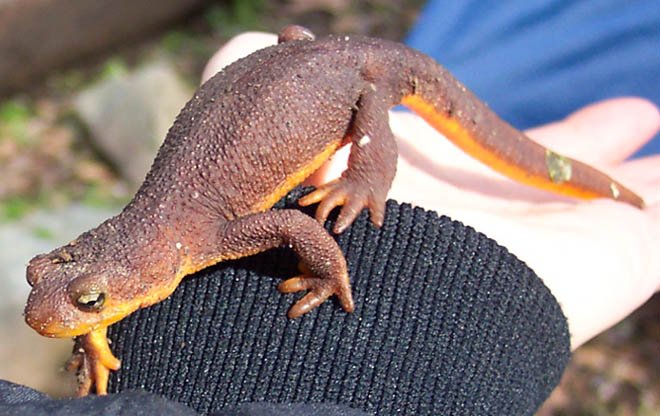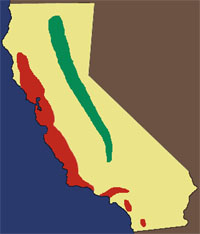|
REPTILES AND AMPHIBIANS California Newt
|
|
|
|
|
|
There are five members of the newt family that inhibit California . They are primary found on the Coastal Range from Humboldt County to the Mexican border. Northern population newts prefer moist forest climates, while southern population newts prefer drier habitats. The adult California Newt size ranges from about 5-8 inches in length. Males are usually slightly larger than females. They vary in color from a dark, yellow brown to pale orange and have warty textured skin. The California Newt mating season last from December to early May and often journey back to breed where they developed as a larvae. The female lays her eggs in shallow water sources such as ponds, lakes and slow moving creeks that don't exceed five inches. They lay 7-30 eggs that are protected by a gel-like poisonous membrane. The California Newt has a unique way of defending themselves against predators. First they raise their heads and point their tails straight out to expose their bright colors to warn off enemies. If they are attacked they can excrete a neurotoxin through its skin that causes paralysis and death to the attacker. If disturbed, the species will sometimes make a clicking or yelping sound. The California Newt's diet consists of earthworms, snails, sow bugs and slugs. Males have also been known to eat their own eggs and larvae. These creatures have an adhesive texture to their tongues and are able to project it out in order to capture their prey. The greatest threat to the California Newt is the crayfish that feeds on their eggs and larvae. However, they have not yet become and endangered species.
(Red Indicates California Newt Habitat) |


